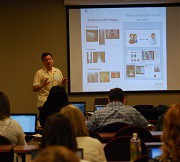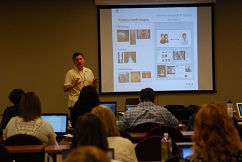(From 4/22/2013 email put out by the American Telemedicine Association) – There has been increasing attention to the rise of “Big Med”–a term coined by Atul Gawande in the August 2012 edition of The New Yorker (NewYorker.com). The term relates to the accelerating trend in mergers, acquisitions and affiliations that are taking place throughout healthcare. Coupled with this is the use of new approaches in the delivery of care that adapts strategies used in retail and other sectors.
The trend is leading to major shifts in healthcare. Dr. James Weinstein, the President and CEO of Dartmouth-Hitchcock has stated: “My vision is that we’re going to have 15 major (healthcare) systems in this country. We can’t support 5,000 hospitals, all going of them doing their own thing.” The shift goes beyond health systems. According to estimates by Accenture, about 39 percent of doctors nationwide are independent, down from 57 percent in 2000.
One of the interesting aspects around this is the increased use of telecommunications technology in making such changes possible. For example, Mayo Clinic’s CEO, John Noseworthy has set a goal of the Clinic touching the lives of 200 million patients by the year 2020. This will take place through Mayo’s “Care Network” that seeks to affiliate and provide “e-consults” to patients in affiliated hospitals throughout the country. Noseworthy has stated: “Our model has been that the patients come to us. Increasingly, going forward … we also wish to extend the reach of the Mayo Clinic, taking our knowledge, taking our experience, and sharing it with others.”
Another approach being used is the use of telemedicine allowing health system’s to share the expertise of specialists and subspecialists throughout their entire system. A leading example of this is Mercy, based in St. Louis, Missouri. Mercy, the sixth largest Catholic health care system in the U.S. serves more than 3 million people annually. It is currently in the process of building a $90 million virtual care center along with a new specialty hospital and corporate offices. The center will enable Mercy to consolidate various telemedicine services at one site. Mercy estimates that using the center to provide shared specialty services and coordinated care with more service sites and easier access can reduce the cost of an emergency room visit alone by $4,000 per patient.
Lynn Britton, the CEO of Mercy, is speaking at the ATA 2013 Opening Plenary Session, where he will discuss his institution’s experience with telemedicine, as well as the key drivers behind his decision to invest heavily in telehealth.


